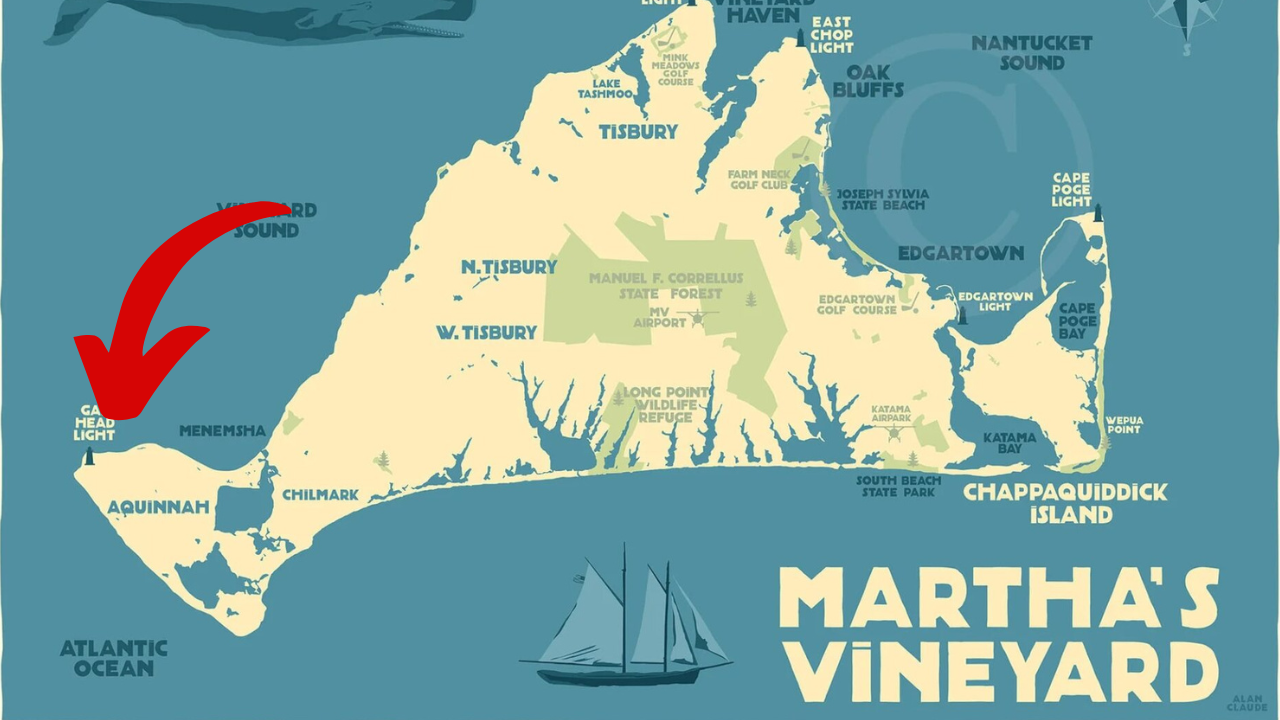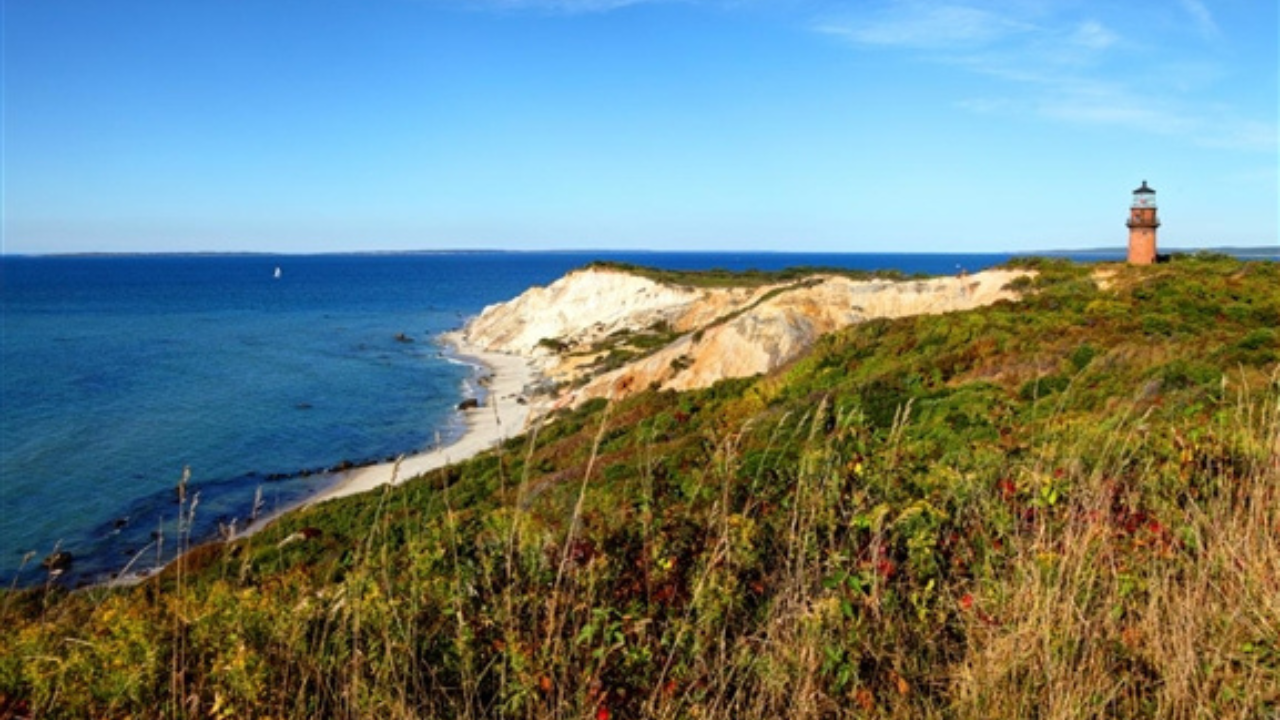Aquinnah: Proposed location for JAWS 50th Anniversary event
Aquinnah, pronounced as uh-KWIN-uh (/əˈkwɪnə/), derives its name from the Wampanoag term Âhqunah. Situated on the western tip of Martha's Vineyard island in Massachusetts, this town was known as Gay Head from 1870 to 1997. As per the 2020 U.S. census, Aquinnah boasted a population of 439 residents. Renowned for its stunning clay cliffs and serene natural surroundings, Aquinnah holds significant historical importance for the native Wampanoag people. In 1965, the Gay Head Cliffs earned distinction as a National Natural Landmark by the National Park Service.
Image via Alan Claude Studio
Aquinnah stands as a focal point for Wampanoag culture, serving as a source of pride and tradition for members of the federally recognized Wampanoag Tribe of Gay Head. Comprising approximately one-third of the town's electorate, they constitute one of the two federally recognized Wampanoag tribes in Massachusetts. This locale stands as an early site of whaling, with the Wampanoag engaging in harpooning long before commercial whaling emerged as a dominant maritime industry in Martha's Vineyard, Nantucket, and New Bedford during the 19th century.
Prior to the arrival of English colonists, Martha's Vineyard and Aquinnah were inhabited by the Wampanoag, a Native American group connected to the broader Algonquin Nation of Southern New England. Linguistically, they spoke an Algonquian language, which formed part of an extensive language family along the Atlantic Coast. Archaeological evidence suggests human occupation in Aquinnah dating back 10,000 to 7,500 years.
Aquinnah, Martha’s Vineyard (image credit unknown)
The Wampanoag recount a separate history, with their creation myth narrating the journey of their ancestors to the island on an ice floe from the far North. They aligned with English settlers during King Philip's War and engaged in whaling activities using small boats. Notably, the character Tashtego in Herman Melville's "Moby-Dick" hails as a Native American harpooner from Aquinnah.
English colonists first settled in this area in 1669. Subsequently, they formally separated Aquinnah from Chilmark, incorporating it as Gay Head, Massachusetts, in 1870. The name Gay Head alluded to the vibrant hues of the cliffs and frequently appeared on lists of distinctive place names.
Furher reading
JAWS 50th Anniversary: Martha's Vineyard concerned by lack of event proposal details
Jaws 50th could see John Williams and Richard Dreyfuss return to 'Amity Island'
JAWS 50th Anniversary: Fans in a frenzy after event rumours grow on social media
In 1997, through a popular vote of 79 to 21, the town adopted the name Aquinnah, meaning "land under the hill" in Wampanoag. Throughout its history, Aquinnah has housed a Wampanoag community. Achieving federal recognition as the Wampanoag Tribe of Gay Head in 1987, they govern sovereign tribal lands within the town's confines.
In 2015, erosion prompted a $3.5 million relocation of the prominent Gay Head Light by 129 feet at the town's western edge.
In February 2019, the Wampanoag Tribe of Gay Head announced plans for the construction of the Aquinnah Cliffs Casino, despite opposition from Aquinnah and Chilmark, and a request from the Martha's Vineyard Commission to collaborate in preserving the island's unique values. The tribe asserts the commission holds no jurisdiction over the project.
During the island's early tourist influx in the late 19th century, ferries transported visitors directly to the cliffs' shores. Presently, there exists no direct transit between Aquinnah and the mainland. Visitors typically utilize commercial flights to Martha's Vineyard Airport or travel by car and ferry.
Hooper’s rock can be found in Aquinnah
Moshup's Beach lies at the base of the cliffs, named after a prominent Aquinnah Wampanoag sachem credited with shaping many features of the island's landscape. The ocean exhibits a distinctive aqua color here, with above-average wave heights. Occasionally, the water takes on reddish, whitish, or grayish hues due to clay erosion from the cliffs.
Enforcement of cliff protection is rigorous, with ATV patrols by police and Wampanoag Conservation Rangers educating visitors on their cultural significance. Disturbing the clay is punishable under Massachusetts General Law.
Although not officially designated as a nude beach, nudity is tolerated at Aquinnah Beach, several hundred yards northwest of the footpath. The beach, historically popular for "clay baths," now prohibits such activities.
Aquinnah spans 40.8 square miles, with 5.4 square miles of land and 35.4 square miles of water. Ranking 334th in area among Massachusetts communities, it stands as the Vineyard's smallest town by land area. To the north and northwest lie Vineyard Sound and Devil's Bridge, while the town shares its eastern border with Chilmark. The Atlantic Ocean surrounds the south and west, with the Elizabeth Islands and Nomans Land visible to the west.
Image via @aquilamv on Instagram
Aquinnah is separated from Chilmark by Menemsha Bight, Menemsha Pond, and Squibnocket Pond, with a single road connecting the two towns. The landscape features rolling terrain, coastal heathlands, deciduous woods, high sand dunes, and beach roses. The Aquinnah Headlands Preserve offers expansive coastal vistas for hikers.
Outdoor enthusiasts can engage in activities such as surf fishing, surfing, jogging, and cycling within Aquinnah's picturesque environs. Despite its rare western-facing coastline on the east coast, Aquinnah contends with coastal erosion like other parts of Martha's Vineyard, Chappaquiddick, and nearby Nantucket, necessitating ongoing efforts to preserve its natural beauty and heritage.
Words by Ross Williams
If you would like to write for The Daily Jaws, please visit our ‘work with us’ page
For all the latest Jaws, shark and shark movie news, follow The Daily Jaws on Instagram, Twitter and Facebook.




